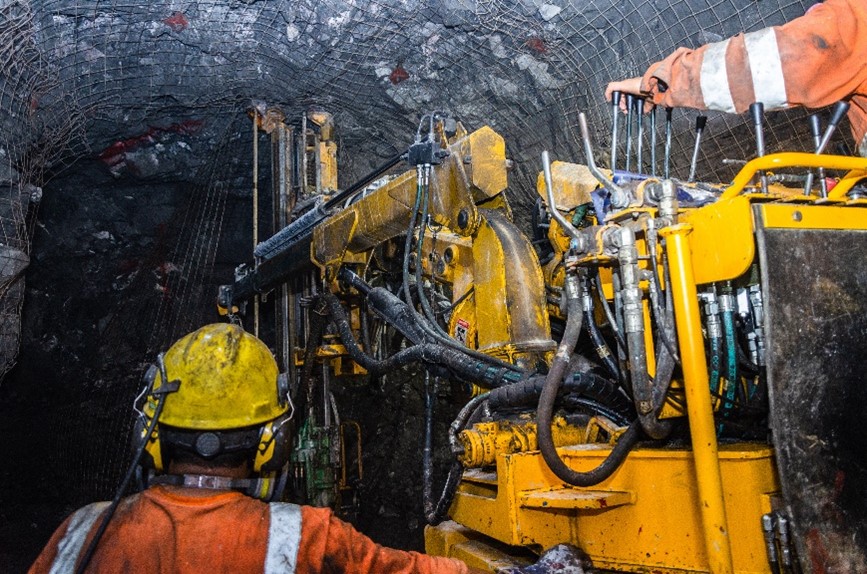
On March 18, 2023, a 42-year-old roof bolt operator was working in the pit area during longwall recovery operations when loose rock roof fell on him in an underground mine in Dahlgren, Illinois. On April 11, 2023, a 26-year-old stope miner was installing bolts in an underground silver ore mine in Wallace, Idaho when a 20 to 25-ton rock from the hang wall fell, crushing him.
Both miners are among the 30 miners who died in a roof or rib fall between 2014 and 2023. Since 2014, nearly 500 rock fall accidents were reported each year because miners continue to be exposed to dangerous roof and rib conditions.
A roof or rib fall is when a mine’s roof or walls collapse into the mine. Uncontrolled falls can injure or kill miners, damage equipment and block ventilation and emergency escape routes.
Roof and rib hazards vary from mine to mine. They are unique structures because they are formed from rock and not of known materials like steel or concrete.
There are two types of roof and rib hazards: natural and mining. Natural sources of roof and rib hazards like weather or brittle rock are caused by the environment and can’t be changed. Mining related hazards include the mine’s design like cut depth and mining height, roof support type and pillars’ spacing, and dimensions are determined by the mine operator.
We want to remind miners of the dangers of working under or near mine roofs and ribs. Mine owners and operators are responsible for the safety and health of miners. Natural mining roof and rib hazards can be reduced when miners are trained to follow these best practices:
- Know and follow the approved roof control plan. You should be familiar with the roof control plan so you can recognize what type of roof support is required to keep miners safe.
- Never travel under an unsupported roof. Always place yourself in a safe position.
- Install and maintain adequate support. The required roof and rib support listed in the MSHA approved roof control plan for the mine should be installed.
- Conduct examinations for changing roof and rib conditions. Inspect the roof, face and ribs before and during each shift for changes and signs of weakening – like roof sags and loose materials. Share all changes in roof and rib conditions with the supervisor, safety manager and other miners.
- Train miners on the installation processes for permanent and temporary roof support. Make sure miners are working under a supported roof.
Help us spread the word about mine roof and rib hazards and how to keep miners safe. You can find our safety alert on our website to share with miners. Read the MSHA Roof Control Plan and Ground Support Review Procedures for information about evaluating and reviewing coal mine roof control plans.
You can report a hazardous mine condition on the online portal or by calling 1-800-746-1553.
Rodney Adamson is the chief of Division of Safety in the U.S. Department of Labor’s MSHA.

 U.S. Department of Labor Blog
U.S. Department of Labor Blog